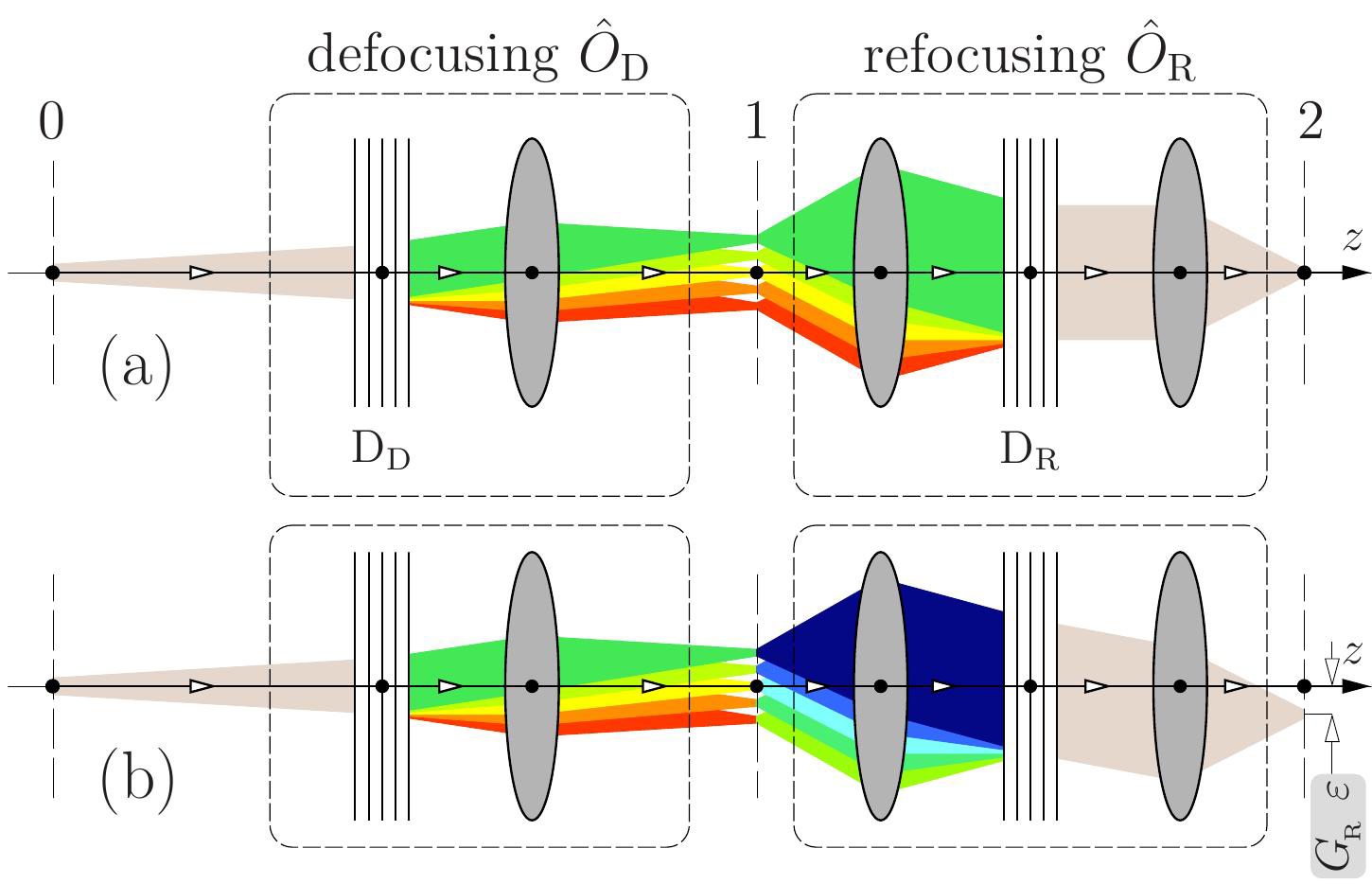Despite a more than 20-years history of use and many advances, IXS is still in its infancy. Inelastic x-ray scattering, which measures the dynamical structure factor, i.e., the time-dependent structure of matter may, in the future, become as scientifically important as crystallography, provided strong signals, sufficient resolution, dedicated IXS beamlines, and sufficient synchrotron facility beam time are available. The main bottleneck in this development is insufficient signal strength and insufficient spectral resolution.
In a paper published in Physical Review Letters, a hard x-ray echo spectroscopy has been introduced to overcome limitations in weak signals and insufficient spectral resolution of the traditional resonant and non-resonant hard x-ray inelastic scattering probes. X-ray echo spectroscopy is a counterpart of neutron spin-echo. Spin echo is the refocusing in the time domain of the defocused spin magnetization by time reversal. The underlying principle of x-ray echo spectroscopy is the defocusing and refocusing of x-rays in the space domain using photon energy dispersing elements (Fig. 1). The technique is applicable in different photon frequency domains. A particular version was proposed in 2006 by Fung et al., and demonstrated in 2012 by Lai et al. in the soft x-ray regime, with diffraction gratings serving as the dispersing elements.
Diffraction gratings are not practical in the hard x-ray regime. The diffraction grating effect in the hard x-ray regime, however, can be achieved by Bragg diffraction from asymmetrically cut crystals (diffracting atomic planes are at a non-zero angle to the entrance crystal surface) and, most important, the effect can be substantially enhanced by using special arrangements of asymmetrically cut crystals.
In the space-domain echo-spectrometer proposed in the Phys. Rev. Lett, publication, an image of a point-like x-ray source is defocused by a dispersing system comprised of asymmetrically cut Bragg diffracting crystals. The defocused image is refocused into a point (echo) in a time-reversal dispersing system as shown in Fig. 1(a), provided the linear dispersion in the defocusing and refocusing systems are properly matched. If the defocused beam is inelastically scattered from a sample, the echo signal is displaced on a pixel detector in the image plane by an amount proportional to the energy transfer ε, see Fig. 1(b). The spatial distribution of the photons on the detector is thus a map of the IXS spectrum.
The essential feature of echo spectroscopy is that it does not rely on the monochromaticity of the incident x-rays, thus ensuring strong signals along with a very high spectral resolution.
Particular schemes of hard x-ray echo spectrometers for 0.1-meV, ultra-high-resolution IXS applications (resolving power > 108) with broadband ≃ 5–13 meV dispersing systems are introduced in the Phys. Rev. Lett. paper. These schemes feature a more than 1000-fold signal enhancement compared to what is possible with the standard scanning-IXS-spectrometer approach. — Yuri Shvyd’ko
See: Yuri Shvyd’ko, “X-ray Echo Spectroscopy,” Phys. Rev. Lett. 116, 080801 (2016). DOI: 10.1103/PhysRevLett.116.080801
Author affiliation: Argonne National Laboratory
Correspondence: *[email protected]
Work at Argonne National Laboratory was supported by the U.S. Department of Energy, Office of Science under Contract No. DE-AC02-06CH11357. Argonne National Laboratory seeks solutions to pressing national problems in science and technology. The nation’s first national laboratory, Argonne conducts leading-edge basic and applied scientific research in virtually every scientific discipline. Argonne researchers work closely with researchers from hundreds of companies, universities, and federal, state and municipal agencies to help them solve their specific problems, advance America’s scientific leadership and prepare the nation for a better future. With employees from more than 60 nations, Argonne is managed by UChicago Argonne, LLC for the U.S. Department of Energy’s Office of Science.
The U.S. Department of Energy’s Office of Science is the single largest supporter of basic research in the physical sciences in the United States and is working to address some of the most pressing challenges of our time. For more information, visit the Office of Science website.

